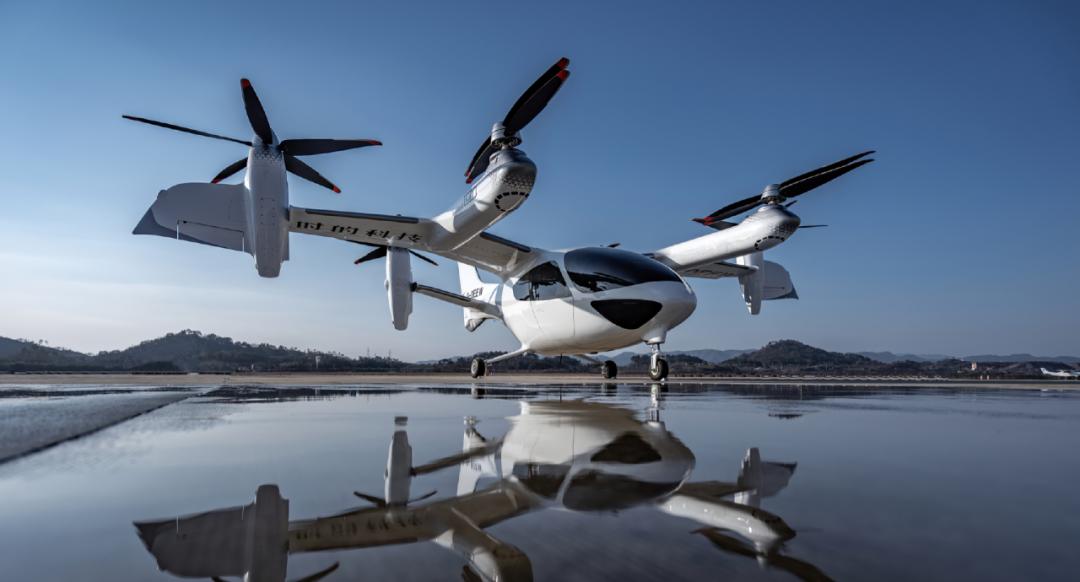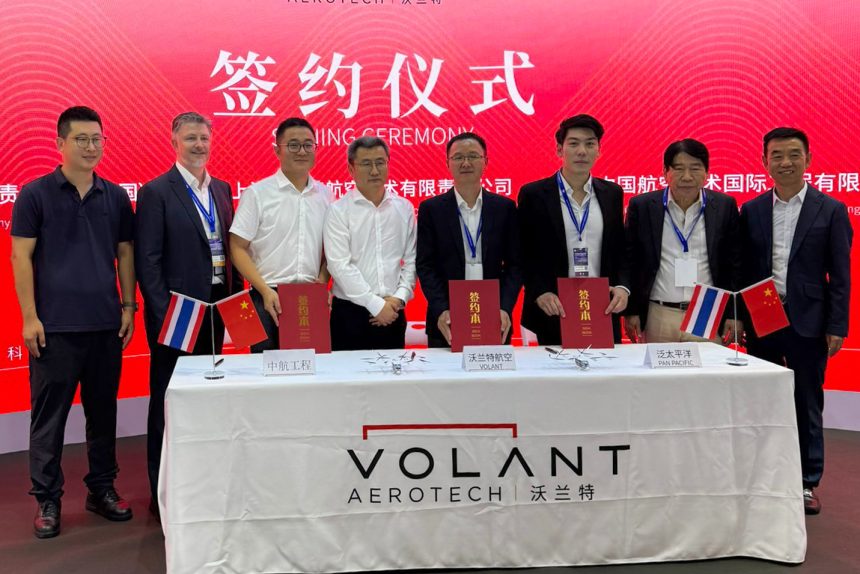Thailand’s Pan Pacific Company Limited has signed a landmark $1.75 billion intent agreement to acquire 500 electric vertical takeoff and landing (eVTOL) aircraft from China’s Shanghai Volant Aerotech Co. Ltd., marking the largest single purchase commitment in China’s eVTOL industry to date.

The strategic deal, announced at the International Advanced Air Mobility Expo in Shanghai, highlights growing regional momentum in the advanced air mobility (AAM) sector and reinforces China’s role as a global innovator in next-generation aviation technologies. The agreement also includes China National Aero-technology International Engineering Corporation (CAIEC), which will provide critical low-altitude infrastructure support to facilitate deployment.
Under the agreement, Pan Pacific — a major Thai property and infrastructure investment firm — will purchase 500 VE25-100 aircraft, commercially branded as Skylar. These aircraft feature a compound wing design, are designed to carry up to six passengers, and boast a range of 200 to 400 kilometers with a cruising speed of 235 km/h. Delivery is expected to commence in phases once the VE25-100 secures airworthiness certification from the Civil Aviation Administration of China.
The eVTOLs will be deployed across multiple regions including Thailand, the Maldives, other Southeast Asian nations, and parts of Africa. The aircraft will be used in a range of low-altitude applications such as passenger transport, aerial tourism, and emergency medical services — aligning with global trends toward cleaner, more agile air mobility solutions.
This milestone follows another major development in China’s eVTOL sector just a week earlier, when the UAE’s Autocraft signed a $1 billion memorandum of understanding with Shanghai TCab Technology Co., Ltd. for the purchase of 350 E20 eVTOL aircraft.
Together, these agreements underscore surging international interest in Chinese-developed eVTOL platforms, as governments and investors race to unlock the potential of urban and regional air mobility in addressing transportation challenges across emerging and developed markets alike.




